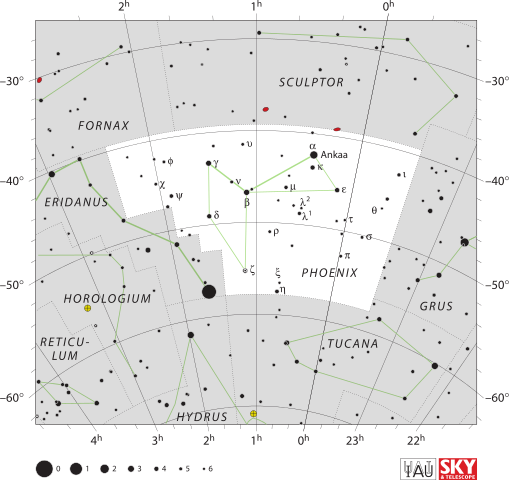- Star Tales - Phoenix (ianridpath.com)
A constellation representing the mythical bird that supposedly was reborn from its own ashes. It is the largest of the 12 figures invented at the end of the 16th century from the observations made by the Dutch navigators Pieter Dirkszoon Keyser and Frederick de Houtman. As with all the Keyser and de Houtman constellations it was first depicted on a globe by Petrus Plancius in 1598 and first appeared in print in 1603 on the Uranometria atlas of Johann Bayer. The constellation lies near the southern end of the river Eridanus and its brightest star, Alpha Phoenicis, known as Ankaa, is of magnitude 2.4.
- Phoenix (constellation) (Wikipedia)
Phoenix is a minor constellation in the southern sky. Named after the mythical phoenix, it was first depicted on a celestial atlas by Johann Bayer in his 1603 Uranometria. The French explorer and astronomer Nicolas Louis de Lacaille charted the brighter stars and gave their Bayer designations in 1756. The constellation stretches from roughly −39° to −57° declination, and from 23.5h to 2.5h of right ascension. The constellations Phoenix, Grus, Pavo and Tucana, are known as the Southern Birds.
